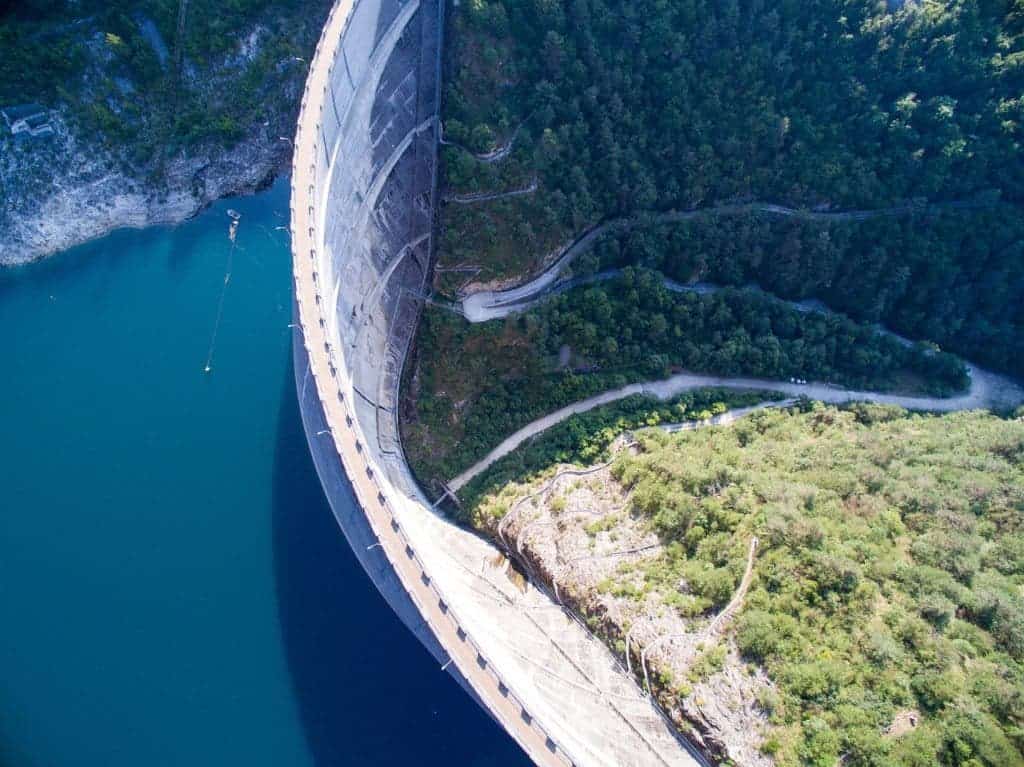
Hydropower is a renewable energy resource that’s often thought of as carbon-neutral, if you ignore the emissions that were generated when a damn was built. A systematic review of hundreds of reservoirs from around the world, however, suggests these make significant amounts of greenhouse gases during their operational lifetimes.
Yet another sizeable source of greenhouse gas emissions
The findings suggest the world’s reservoirs generate about as much greenhouse gases, particularly methane, as rice paddies which are taken into account in both climate models and governmental carbon policies. Up until now, reservoirs have been discounted from this scrutiny, and it may be time for this to change.
“While reservoirs are often thought of as ‘green’ or carbon neutral sources of energy, a growing body of work has documented their role as greenhouse gas sources,” the authors of the new paper said in a statement.
The international team of researchers painstakingly synthesised all the modern studies on reservoirs they could find. Their review encompasses 267 reservoirs, held together by 1 million dams, which together cover 30,00 square miles.
When humans build a new reservoir, they dramatically alter the landscape by flooding large areas. These regions are typically packed with organic matter, like trees and vegetation, which once flooded become decomposed by microorganisms, setting a chemical reaction with methane as a byproduct. Then, there are nutrients like phosphorus and nitrogen which are carried by rivers and waste streams, and give the microorganisms even more food to chow down.
When the researchers finished their tally, they found that reservoirs collectively emit more than “natural lakes, ponds, rivers, or wetlands.” Specifically, that’s almost a gigatonne of equivalent carbon dioxide or nearly 1.3 percent of the world’s tracked CO2 emissions. Most of the reservoir emissions were comprised of methane, which accounted for 79 percent of carbon dioxide equivalent emissions, followed by carbon dioxide and nitrous oxide, which accounted for 17 percent and 4 percent, respectively.
“We had a sense that methane might be pretty important but we were surprised that it was as important as it was,” said Bridget Deemer, Washington State University research associate and lead author. “It’s contributing right around 80 percent of the total global warming impact of all those gases from reservoirs. It’s a pretty important piece of the budget.”
To keep things in perspective, the total greenhouse emissions from reservoirs is about as much as Canada’s carbon emissions. That’s definitely considerable but until now reservoirs have been exempted from carbon projections and have not made the object carbon budgets. The latter is particularly important nowadays in the wake of the Paris Agreement that was signed by more than 190 countries who vowed to reduce their emissions and keep the planet off a 2 degrees Celsius warming trajectory.
The study does have some limitations, though. For one, the review does not use a life cycle analysis, meaning the authors did not calculate how much carbon was stored in the lands before flooding or how much carbon the hydropower plants associated with these reservoirs offset by displacing coal plants, for instance.
What’s clear, however, is that reservoir emissions should be taken seriously, especially since there are 847 large hydro projects now under consideration or construction. The U.N. Intergovernmental Panel on Climate Change is now considering whether to include reservoirs in its next set of guidelines and findings slated for 2019.
“There’s been a growing sense in the literature that methane bubbles are a really important component of the total emissions from lake and reservoir ecosystems,” said Deemer. “This study revisited the literature to try and synthesize what we know about the magnitude and control on methane emissions and other greenhouse gases—carbon dioxide and nitrous oxide.”
The new paper will be published next week in the journal BioScience.






